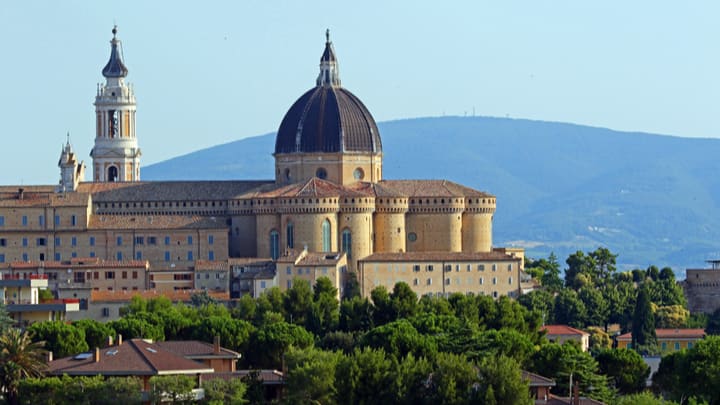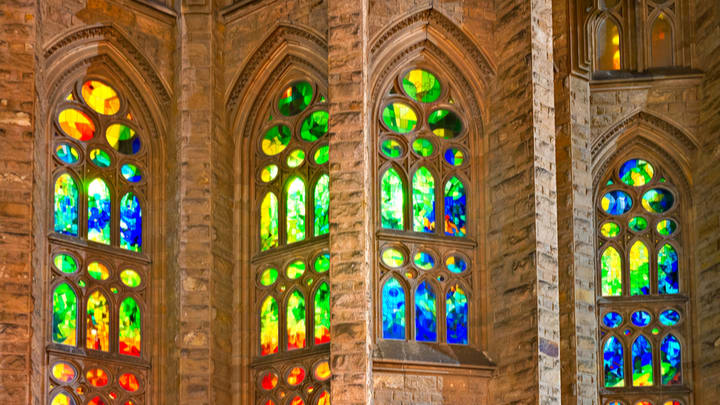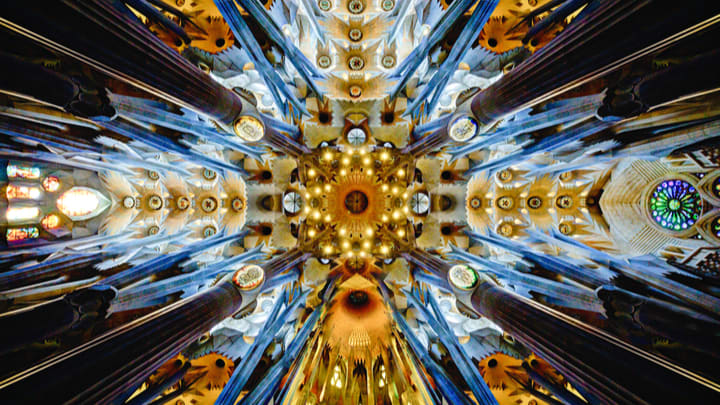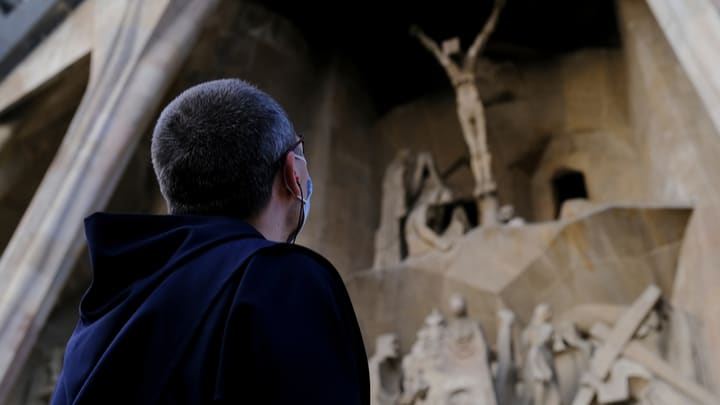Sagrada Familia Interior
A monolith to Christianity, the Sagrada Familia is one of Catalonia's most iconic sights. If you're visiting Barcelona, and want to know more about it, read our guide to the brilliance of the Sagrada Familia, including the wonderfully-crafted interior!

Image courtesy of Stock Holm/Shutterstock
What is the Sagrada Familia
To put it simply, La Sagrada Familia is a temple that was designed by world-famous Catalan architect Antoni Gaudí. It was considered his Magnum Opus, but he was unable to finish it before his death more than 100 years ago. To this day, the monument has yet to be finished, with work continuing as you read this very sentence. Probably. Unless you're from the future? In which case, are flying cars any good? We've been waiting a long time for them.
The History of the Sagrada Familia
The idea for La Sagrada Familia popped into existence in the late 19th century when businessman Josep Bocabella visited the Vatican. It left such an impression on him that he hoped to recreate its magnificence in Barcelona, itself a very Catholic city.

So, with his idea and no understanding of architecture, he approached some experienced builders and pitched it to them. Renowned Catalan architect Francisco de Paula del Villar accepted the challenge, and drew up plans for a classicly Gothic monument to Christianity. However, after the crypt was finished, creative disagreements with one of Bocabella's assistants led to him walking away from the project only a year after construction had begun.
Then, Bocabella approached Gaudí, who had already made a name for himself in the city. Gaudí accepted, and got to work on redesigning the entire project.
Unfortunately, the size and scope of the project would outlive both Bocabella and Gaudí, and damage to the latter's plans due to the Spanish Civil War led to a fifteen-year-long recovery job. Since then, work has restarted, with many famed builders assuming the mantle of lead architect. And after over a century since the project began, it's nearly complete!
The Sagrada Familia Interior
As soon as you see the Sagrada Familia, you'll understand why it's taken so long to complete. Its massive, intricate spires are quite unlike anything else on Earth. While it towers over nearly everything in the city, Gaudí demanded its tallest spire never supersede Montjuic Hill. A devout Catholic, he felt that no structure should ever exceed that of God's own making.
However, once you step inside its magnificent walls, it's like being transported into another world. A breathtaking mix of Gothic sensibilities and Gaudí's love of naturalism, every inch was intricately designed to celebrate the stories and figures of the Bible, as well as Mother Nature. A short glance at the church's massive columns will inevitably evoke thoughts of gazing up at huge tree trunks.

Image courtesy of Luciano Mortula - LGM/Shutterstock
Given how many colors we see in nature, it's no surprise that Gaudí was quite the fan. Nearly all of his works are dripping in various colors and hues, and the Sagrada Familia is no different. Its massive stained glass windows fill the interior with beautiful mixes of reds, blues, yellows, and greens. Many techniques ensure that light focuses on specific parts of the Sagrada Familia interior. More strongly colored windows sit near the ground, while clearer ones further up, which ensures the impressive ceiling is bathed in light and draws your attention. At different times of day, the placement of the sun will dramatically affect the look of the church's inside, so you may want to visit it at more than one time during the day to see the difference!

Then, there's the church's apse - the half-dome that usually sits above the altar. The Sagrada Familia's apse was Gaudí's first port of call after putting his own final flourishes on the half-done crypt. With its gaping windows letting in tons of natural light, grapevine-laden canopy, and its cross-topped altar, it's a magnificent sight and worthy of more than a few snaps.
You'll also notice the apse's walls feature angels shedding tears. They must like it too! Seven chapels branch off from the apse, and two spiral staircases wind their way up the façades like two giant stone snails!

Speaking of the crypt, you can see how different the original design was when compared to the unique techniques applied throughout the rest of the Sagrada Familia interior! Familiar but no less stunning mosaic floors are laden with vines, roots, and other flora. Even though Gaudí already had a mind for nature in his work, it's likely he used these designs as a jumping-off point when redesigning everything above ground! Gaudí and Bocabella remain the only two people to be buried here, which is appropriate considering their importance to the project.
Given its utter brilliance, it's no wonder that the Sagrada Familia is one of Barcelona's most popular tourist destinations. Rather than risk missing out or queuing for hours, why not book a guided tour of this magnificent building and learn all about it from someone a lot more clever than we are!

Image courtesy of Alexandros Michailidis/Shutterstock
Gaudí's workings up close
Unlike his peers, Gaudí preferred creating to-scale models rather than relying on blueprints. What a guy. And that's good for you too, because you can also visit the Sagrada Familia museum and see many of his models up close for yourself!
While much of this burnt during the aforementioned civil war, the pieces that were used to restart the project are now contained within the museum. Inside, you'll find models of the spires, many parts of the interior, as well as photos, drawings, and other artifacts from the last 150 years. Well worth a visit, simply for the scale of some of these models, which easily tower above our measly human frames.
And that's everything you need to know about the Sagrada Familia interior! Enjoy your stay, and remember to take as many photos as possible!
